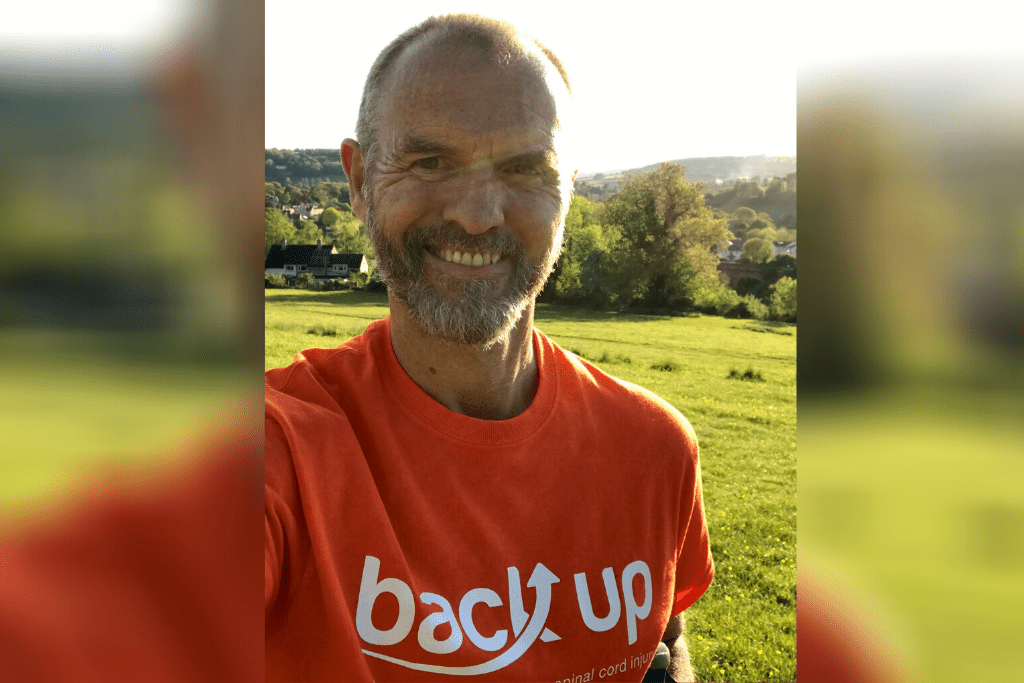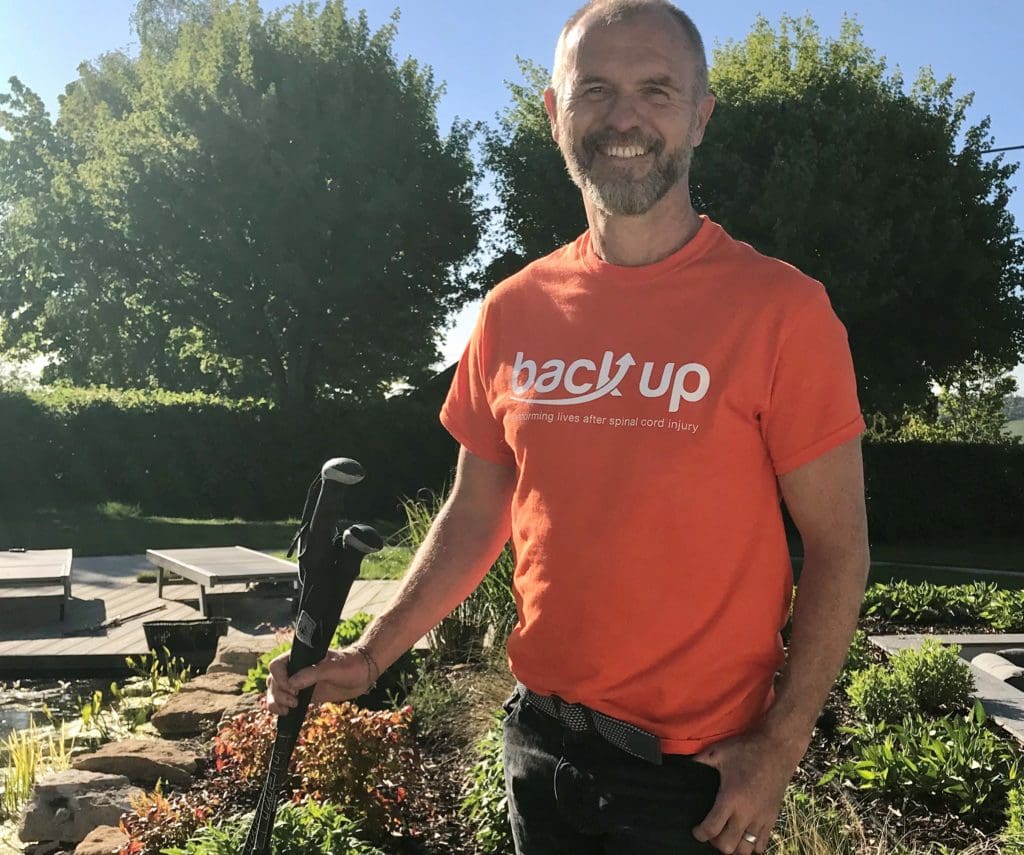Paul’s story: Walking the Spinal Circuit
6 May 2020

In these tricky times, we are more thankful than ever for the support of our tireless fundraisers. The global coronavirus pandemic has meant we are facing a significant drop in income at a time when our services are needed more than ever. To help make up for this drop, we have been running campaigns such as our appeal, the 2.6 Challenge, and the Spinal Circuit.
The Spinal Circuit is a unique new challenge, where participants are encouraged to help us travel the distance between all the spinal centres in the UK while following social distancing. We have participants who are pushing, running, and cycling to help add to our final total. One of these participants is Paul, who is aiming to walk 100km before this challenge ends on Spinal Cord Injury Awareness Day (SCIAD), 15 May. We interviewed him to find out how his efforts are going.
Tell us a bit about yourself…
I’m currently retired after a career in the commercial and charity sectors, living with my wife and two teenage kids. I’ve got a very long list of things I want to do in my retirement, like hobbies and personal interests, but at the moment I’m getting more involved with Back Up.
I sustained my spinal cord injury when I was living and working in Singapore, shortly after I moved there from Shanghai in 2011. I was cycling the roads around a large park, and my front wheel must have gotten caught in a drain or hole. The next thing I knew I had regained consciousness in the gutter, was surrounded by passers-by, and couldn’t move my body.
How does your spinal cord injury affect you?
I sustained an incomplete spinal cord injury at the C5/C7 level. After a few weeks I was able to walk without the use of aids but, ever since moving back to the UK six years ago, I’ve been dealing with a lot of neuropathic pain and increased tone and spasticity. Now I use walking poles and occasionally a wheelchair for when I travel longer distances.
I also have to deal with some stress induced incontinence. That is one of my main challenges alongside my constant pain, thankfully this is manageable.
How did you encounter Back Up?
My injury changed my life in every way. I had to learn how to do everything again, from picking up a pen to getting dressed. It also affected my family life. My wife, who had to deal with an international relocation and look after our two young kids, was deeply traumatised and suffered from PTSD and depression. Spinal cord injury is like climbing several mountains at the same time – looking after yourself, your loved ones, and adapting to walking was tough.
I first encountered Back Up when I returned to the UK. In Singapore I had never really found a post-injury “tribe’. Singapore is a very small place. There are very few people with a spinal cord injury and a tiny number of injured people who can walk. When I moved home I felt like I needed a community.
I went on a Next Steps course in Bath, which absolutely exceeded my expectations. I got to know other people who can walk after spinal cord injury, that was very powerful. We could talk about our trauma in a comfortable setting. It’s great to be able to discuss any topic with someone who understands. I loved having a listening ear.
What made you want to take on a fundraising challenge for Back Up?
I never for a second forget how fortunate I have been to rebuild my life after spinal cord injury. When I saw Back Up launched their coronavirus appeal and the spinal circuit, it only took a split second of thinking before I signed up. I have challenged myself to walk 100km before Spinal Cord Injury Awareness Day.

Paul is delighted to take part in the spinal circuit
How is your Spinal Circuit challenge going?
As of early May I have done nearly 80km. The way I do it is by having a couple days of rest per week in between the five days where I walk as far as I can. With less than two weeks to go, I’m aiming to pick it up a bit though! I’ve been tracking myself on Strava. I decided it was fair to track myself when I’m doing gardening jobs, like mowing the lawn. The occasional kilometre here and there is helping towards the grand total.
I initially set a target to raise £500, but I smashed that! I am now on the way towards £2000 – I’m still a fair way off Captain Tom, though!
What advice would you give to someone in a similar situation?
Let yourself go a little bit crazy – set yourself an ambitious goal that will be a real stretch, so when you meet it it’ll feel like a real achievement. At the same time, you need to make sure to be kind to yourself. Remind yourself that your goal is there to motivate you and help drive you on. But what matters most is the progress that you make and the things you learn about yourself and others along the way. Being kind includes being saying thank you, not just to others but also to yourself. Its important to thank your body for every bit of progress you make, no matter how small it is.
Be sure to communicate with the people who are backing you, and educate them about life with a spinal cord injury. Tell your story honestly and plainly – the simple, unvarnished truth of dealing with a spinal cord injury is more than most people can imagine. Your authenticity will touch people deeply, open their hearts and minds, make them understand how important it is to donate.
We’re so glad that Paul is tackling this challenge for us. Find out how you can get involved in our Spinal Circuit challenge – there’s still plenty of time for you to join in and make a difference for everyone affected by spinal cord injury, no matter the distance you want to tackle.


